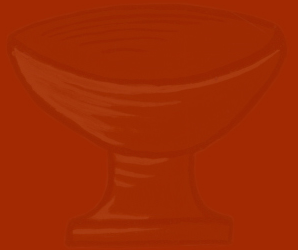
About this icon
The traditionally half-length icon depicts Christ fully frontal with a somewhat melancholy and stern aspect, with the right hand raised in blessing. The other hand is holding a closed book with a richly decorated cover featuring the Cross, representing the Gospels.
Christ's brown hair is centrally parted, and his head is surrounded by a halo. On each side of the halo are Greek letters: IC and XC. Christ's fingers are depicted in a pose that represents the letters IC, X and C, thereby making the Christogram ICXC (for "Jesus Christ").
Christ Pantocrator [Ruler of All]
Pantocrator or Pantokrator is one of many titles ascribed to the Divine. When the Hebrew Bible was translated into Greek as the Septuagint, Pantokrator was used to translate the Hebrew title El Shaddai. Early Christians ascribed this title to Jesus of Nazareth.
The most common translation of Pantocrator is "Almighty" or "All-powerful." This is often understood in terms of potential power; i.e., able to do anything, or omnipotent. Another, less literal translation is "Ruler of All" or "Sustainer of the World."
Pantokrator is roughly synonymous with the western concept of omnipotence. But omnipotence is power in stasis while the power of the Pantokrator is dynamic.
The icon of Christ Pantokrator is one of the most widely used religious images of Orthodox Christianity. Generally speaking, in Byzantine church art and architecture, an icon of Christ Pantokrator occupies the space in the central dome of the church, or simply on the ceiling, over the nave.




